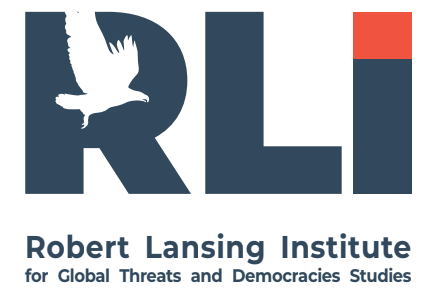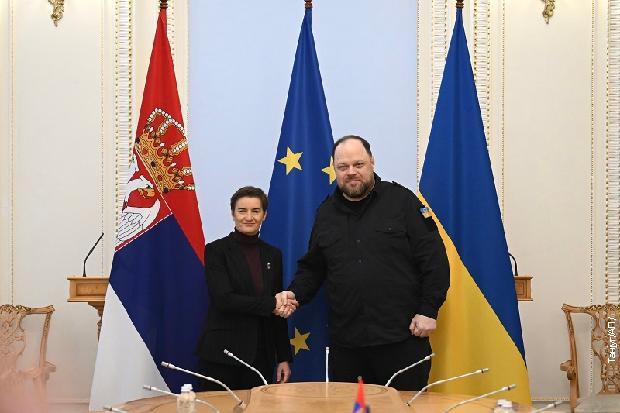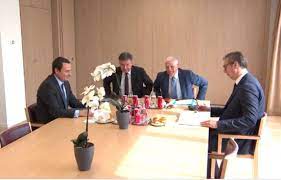As Serbia wavers between Moscow and Brussels, the idea of a “Serbian World” is unraveling under the pressures of the Ukraine war. With Belgrade’s double game exposed, Russia may shift its focus to Montenegro and other fragile Balkan states, signaling a new phase of influence through disruption rather than alliance.
For over a decade, Serbia has perfected the art of ambiguity, maintaining close political and energy ties with Russia while courting the European Union with the promise of eventual alignment. This delicate balance has allowed Belgrade to act as both partner and provocateur, benefiting from Moscow’s protection and Brussels’ patience. Yet the global context has changed. The war in Ukraine has shattered the old certainties of neutrality, and Serbia’s balancing act is reaching its natural limits.
What once looked like strategic flexibility now appears as strategic confusion. Serbia’s symbolic gestures toward Europe, its hesitations to condemn Russia, and its constant invocation of the “Serbian World”, a soft-power echo of Moscow’s “Russian World”, all show a state struggling to define its identity between two collapsing poles.
Russia exposes its ‘brother’
The façade began to crack when Moscow publicly rebuked President Aleksandar Vučić for what it called Serbia’s duplicity. After Belgrade signaled readiness to sell ammunition to European partners, “even if it ultimately reaches Ukraine” Russian media unleashed a wave of indignation. The Russian Foreign Ministry’s spokesperson, Maria Zakharova, went further, mocking Vučić by saying, “It’s not clear whether there is one Vučić or two, one speaking in Moscow, the other in Brussels.”
It was an unusually sharp message from a country that once called Serbia its “spiritual ally.” For the Kremlin, Vučić’s attempt to keep both sides happy had crossed a line. Russia, now isolated and paranoid, sees every gesture of cooperation with Europe as treason. This public humiliation was not only a diplomatic signal- it was a strategic decoupling. The Kremlin was warning Belgrade that the old deal, Russian protection in exchange for political loyalty was over. If Serbia wished to keep EU funds and Western markets, it would lose Russia’s shield in the Balkans.
A symbolic rupture, Brnabić meets Zelenskyy
The November 2025 meeting between Ukrainian President Volodymyr Zelenskyy and Serbian Parliament Speaker Ana Brnabić was far more than a polite diplomatic gesture. Officially framed as a dialogue on European cooperation and regional stability, it marked Serbia’s first overt step toward Kyiv since the start of the war. Yet beneath the surface, it revealed the full schizophrenia of Belgrade’s diplomacy.
According to Ukrainian and regional sources, Brnabić used the opportunity to ask Zelenskyy not to recognize Kosovo’s independence, a request that bordered on paradox. Here was a senior Serbian official appealing to a wartime president defending his own state from Russian aggression, urging him to withhold recognition from another small state, Kosovo that Serbia still dreams of reclaiming by force or partition.
The symbolism was staggering. Serbia was appealing to Ukraine to uphold a principle of territorial integrity that Belgrade itself has repeatedly undermined, both in rhetoric and practice. For Zelenskyy, whose nation has been dismembered under the same logic Moscow used to justify Serbia’s “special relationship” with Republika Srpska and Kosovo Serbs, the moment was almost absurd.
The request exposed the fragile balancing act that Vučić and his government are still trying to perform. By meeting Ukraine, Serbia hoped to reassure the EU of its pragmatism. By raising Kosovo, it sought to prove its nationalist credentials at home. The result was diplomatic incoherence: a plea for solidarity built on a contradiction.
For Moscow, however, there was nothing amusing about this. Russia interpreted the Brnabić-Zelenskyy meeting as an unmistakable betrayal. Within days, Zakharova’s sarcastic comments went viral, and pro-Kremlin outlets accused Serbia of “selling its brotherhood for European applause.”
In effect, this was a symbolic rupture. Serbia’s two-track foreign policy, pretending to be neutral while profiting from both camps had finally become untenable. Asking Ukraine to respect Serbia’s territorial claims while refusing to condemn Russia’s violations of Ukraine was no longer seen as diplomatic subtlety. It was moral incoherence.
The ‘Serbian World’ reaches its limits
The ideological core of Vučić’s rule, the Serbian World (Srpski svet) was modeled on Russia’s Russkiy mir (Russian world): a soft-power concept built on ethnic unity, Orthodox identity, and a shared narrative of historical victimhood. Both ideas were designed to blur the borders of nationhood, suggesting that belonging transcends state sovereignty.
Yet the Serbian World is faltering precisely because its Russian counterpart is failing. The invasion of Ukraine turned Moscow’s “spiritual mission” into a brutal colonial war. For Belgrade, the lesson was clear: promoting ethnic and cultural unity across borders may serve as domestic propaganda, but it also exposes Serbia to the accusation of pursuing the same revanchist logic as Putin.
As Serbia moves closer to the EU under external pressure, the ideological scaffolding that sustained the Serbian World is eroding. Belgrade’s regional influence is shrinking, and its claim to lead the Balkans as a “protector of Serbs everywhere” is outdated and dangerous.
On the other hand, the EU and the United States have intensified their conditionality, making it clear that Serbia’s path to integration depends on aligning with Western sanctions against Russia. Energy diversification plans, previously unthinkable, are now underway. The message is simple: no country can sit on two chairs indefinitely.
Vučić, ever the political survivor, still tries to delay the inevitable. He signals loyalty to Moscow in public speeches while quietly increasing cooperation with NATO and the EU. But this double game is collapsing as Moscow itself starts exposing him, stripping away the ambiguity that once protected him. For the first time, Serbia is facing the consequences of its own duplicity, not from Brussels, but from Moscow.
For two decades, Serbia was Russia’s political and energy corridor into the Western Balkans. The “Serbian World” gave Moscow ideological cover, while Russian gas and media influence ensured loyalty. That corridor is now narrowing fast. Serbia’s tentative engagement with Ukraine, its openness to selling arms to European partners, and its willingness to entertain EU energy reforms all suggest a slow but real shift. To Moscow, this is not neutrality, it is betrayal. And betrayal, in the Kremlin’s logic, must be punished. If Serbia can no longer serve as Russia’s gateway, the Kremlin will look for new points of leverage in the region.
Montenegro, Moscow’s next target
With Serbia wavering and Bosnia’s Milorad Dodik temporarily out of office, Montenegro may become Russia’s next arena of disruption. For Moscow, Podgorica offers a perfect combination of opportunity and symbolism.Despite being a NATO member since 2017, Montenegro remains deeply polarized. The Serbian Orthodox Church wields vast influence, many citizens consume Russian-linked media, and the memory of the 2016 coup attempt, organized by Russian intelligence, still lingers.
For the Kremlin, Montenegro is a low-cost battlefield: a small, divided country where limited interference can yield major results. Destabilizing a NATO member would embarrass the Alliance and reinforce Moscow’s claim that the West’s Balkan expansion rests on “artificial states.”
Until recently, Republika Srpska under Dodik was Moscow’s favorite instrument. But Western pressure and Dodik’s partial withdrawal from public office have weakened that front. Bosnia is now under tight EU and NATO monitoring. With its primary proxy constrained and Serbia uncertain, Russia’s logical alternative is Montenegro, a state whose fragility can be exploited through religious, economic, and information networks rather than open confrontation.
The Russian toolkit for destabilizing Montenegro
Russia’s influence in the Western Balkans today is primarily hybrid: it operates less through conventional force than through a combination of narratives, money, identity politics and institutional pressure. In Montenegro, Moscow’s playbook can be summarized in four complementary vectors:
A disinformation ecosystem- Russian‑affiliated media and social channels amplify anti‑NATO and anti‑EU narratives, casting Western institutions as corrupt, hypocritical, and culturally alien. These stories are tailored to local grievances and magnified through social networks to erode trust in democratic institutions.
Religious leverage- The Serbian Orthodox Church remains a potent mobilizing force in Montenegro. Disputes over church property, liturgical authority, or legal status can be framed as existential assaults on identity, a reliable trigger for protests and political mobilization.
Opaque economic channels- Through shadowy investment vehicles in tourism, real estate and other sectors, Russian capital can quietly bankroll sympathetic actors, media outlets, or NGOs. These economic ties both enable influence and provide plausible deniability for Moscow.
Exploitation of political fragmentation- Montenegro’s chronically fragile coalitions and narrow parliamentary majorities make governance vulnerable to disruption. Rather than installing outright proxies, Moscow’s objective is to deepen divisions and block effective policy, producing paralysis.
Put together, these instruments aim at a single strategic outcome: paralysis by division. A society too fractured to govern itself becomes, in effect, geopolitically neutralized and unable to make choices that would consolidate its Western integration.
On the other hand, if Vučić truly intends to pivot toward Europe, his response to potential Russian interference in Montenegro will be the ultimate test. Belgrade’s silence or ambivalence would imply tacit approval. A clear stand against destabilization, however, would require confronting entrenched nationalist structures still loyal to Moscow, including within his own administration. So far, Vučić prefers ambiguity: condemning “foreign interference” in principle while avoiding specifics. Yet as Moscow turns toward chaos in the region, such ambiguity may no longer be sustainable.
Russia’s approach to global politics has shifted from expansion to disruption. Where it cannot dominate, it destabilizes. If Serbia slips from its grasp, the Kremlin’s goal will not be to rebuild influence, but to ensure that no stable Western order emerges in its place. Destabilizing Montenegro or reigniting ethnic tension elsewhere, would serve that purpose perfectly. Chaos, after all, costs Russia little but costs Europe much.
The coming months will reveal whether Russia’s anger at Serbia translates into action elsewhere. Warning signs will include: spikes in anti-NATO propaganda in Montenegrin and Serbian media, new protests framed around religion or identity, financial scandals linked to Russian investors, and renewed rhetoric about “protecting Serb identity” across borders.
If these patterns appear, they will not be coincidences but part of a deliberate pivot in Moscow’s Balkan strategy, from influence through friendship to disruption through chaos.
The End of Ambiguity and the Future of the Balkans
The Serbian World was never merely a domestic narrative; it was a regional project, modeled on Russia’s Russkiy mir, promising unity, protection, and influence for Serbs beyond Serbia’s borders. Yet this vision is unraveling under the pressures of the Ukraine war, Serbia’s exposed contradictions, and Moscow’s growing impatience. Vučić’s double game signaling loyalty to Moscow, while engaging with the EU is increasingly unsustainable, and neutrality is rapidly becoming untenable.
Serbia now faces a stark choice: continue hedging between East and West or commit decisively, either toward European integration or deeper alignment with Russia. Every day of delay risks further isolation from both Moscow and Brussels. Moscow’s public humiliation of Vučić, the symbolic rupture marked by Brnabić’s meeting with Zelenskyy, and Serbia’s energy and economic vulnerabilities have made the costs of ambiguity painfully clear.The stakes extend far beyond Belgrade. As Serbia’s role as Russia’s corridor diminishes, Moscow is likely to pivot to more vulnerable targets, with Montenegro at the forefront. Serbia has no capacity to act as a stabilizing force in the region, because its continued double game risks domestic instability and the chance of becoming a secondary stage for Russian disruption. The choices Vučić and Belgrade make in the coming months will define Serbia’s future and the stability of the Western Balkans whether it leads the region toward integration and stability, or remains a reluctant bystander as Moscow exports chaos.
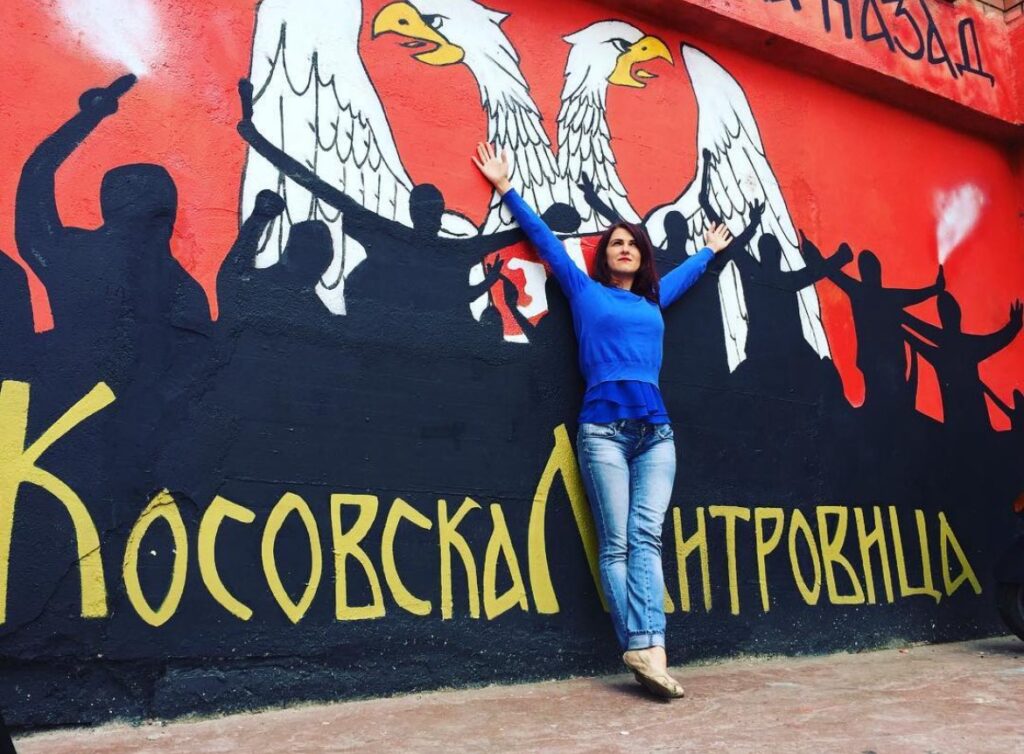
More on this story: The reinvention of an Old Front: Propaganda and Proxy Battles in Northern Kosovo

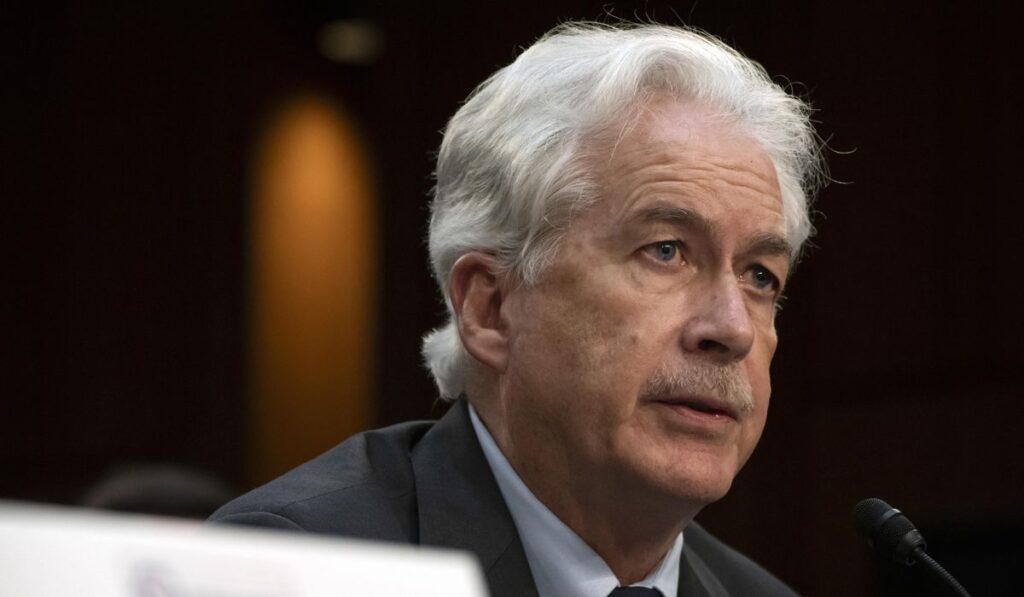
More on this story: Vucic’s maneuver to stay with and against the West by destabilizing Kosovo

More on this story: Is Serbia provoking another confrontation in Kosovo?
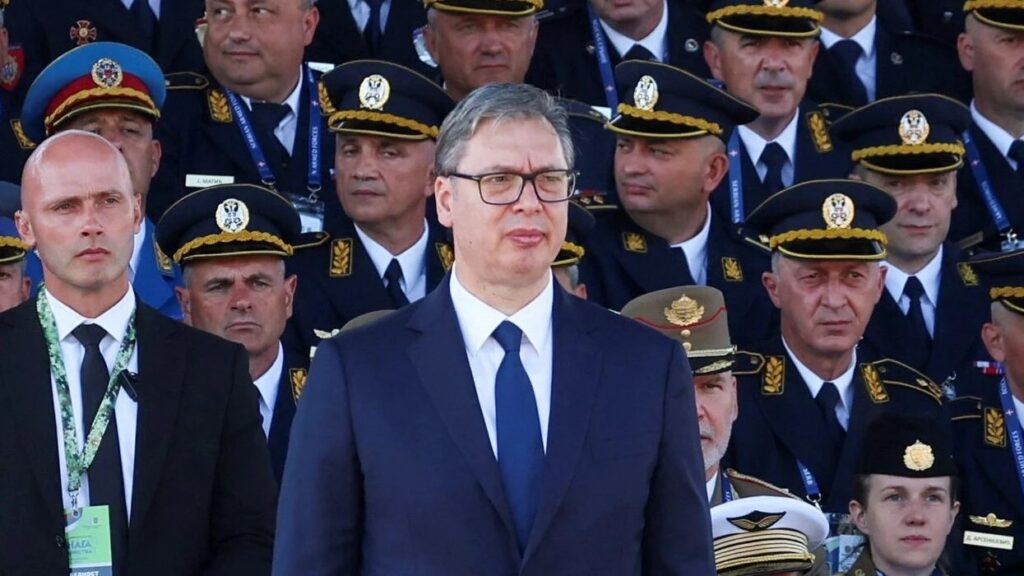
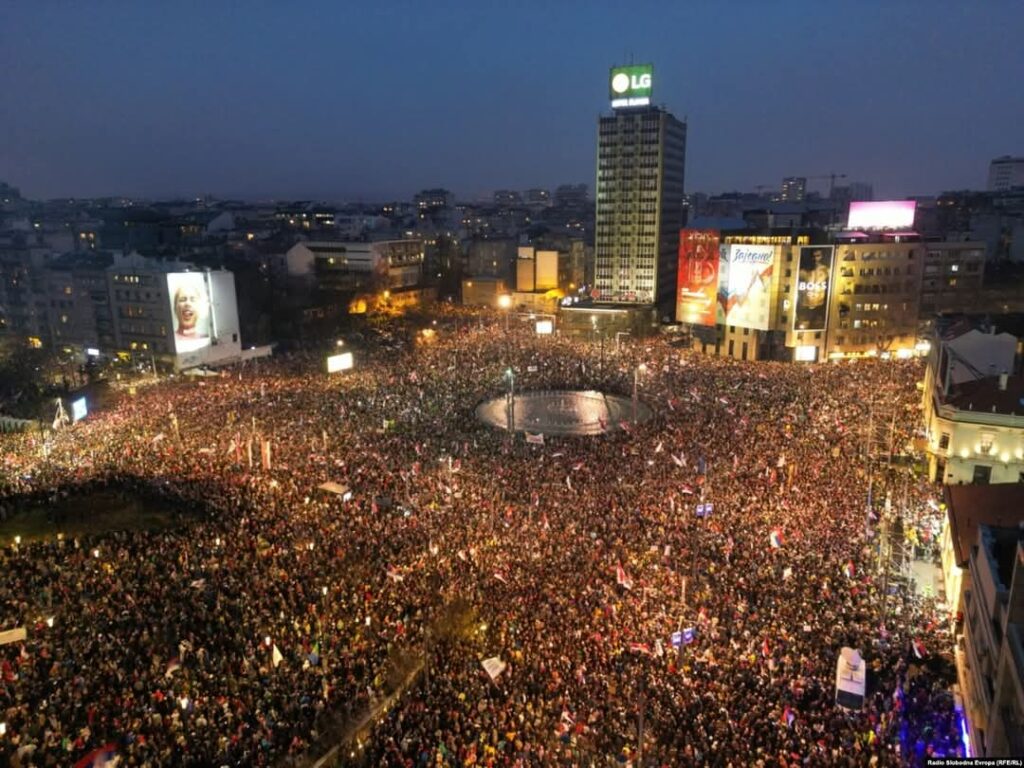
More on this story: Vucic will not resign He will try painful scenarios
